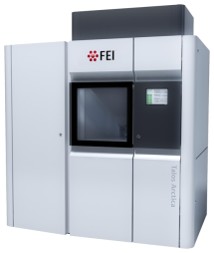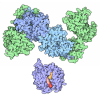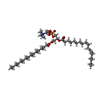+ Open data
Open data
- Basic information
Basic information
| Entry | Database: PDB / ID: 9foj | |||||||||
|---|---|---|---|---|---|---|---|---|---|---|
| Title | LGTV TP21. Langat virus, strain TP21 | |||||||||
 Components Components |
| |||||||||
 Keywords Keywords | VIRUS / Flavivirus / Langat virus / recombinant virus | |||||||||
| Function / homology |  Function and homology information Function and homology informationsymbiont-mediated suppression of host JAK-STAT cascade via inhibition of JAK1 activity / flavivirin / symbiont-mediated suppression of host JAK-STAT cascade via inhibition of host TYK2 activity / symbiont-mediated suppression of host JAK-STAT cascade via inhibition of STAT2 activity / symbiont-mediated suppression of host JAK-STAT cascade via inhibition of STAT1 activity / symbiont-mediated activation of host apoptosis / viral capsid / double-stranded RNA binding / nucleoside-triphosphate phosphatase / clathrin-dependent endocytosis of virus by host cell ...symbiont-mediated suppression of host JAK-STAT cascade via inhibition of JAK1 activity / flavivirin / symbiont-mediated suppression of host JAK-STAT cascade via inhibition of host TYK2 activity / symbiont-mediated suppression of host JAK-STAT cascade via inhibition of STAT2 activity / symbiont-mediated suppression of host JAK-STAT cascade via inhibition of STAT1 activity / symbiont-mediated activation of host apoptosis / viral capsid / double-stranded RNA binding / nucleoside-triphosphate phosphatase / clathrin-dependent endocytosis of virus by host cell / mRNA (guanine-N7)-methyltransferase / methyltransferase cap1 / methyltransferase cap1 activity / mRNA 5'-cap (guanine-N7-)-methyltransferase activity / RNA helicase activity / protein dimerization activity / host cell perinuclear region of cytoplasm / host cell endoplasmic reticulum membrane / RNA helicase / symbiont-mediated suppression of host type I interferon-mediated signaling pathway / symbiont-mediated activation of host autophagy / RNA-directed RNA polymerase / serine-type endopeptidase activity / viral RNA genome replication / RNA-directed RNA polymerase activity / fusion of virus membrane with host endosome membrane / viral envelope / virion attachment to host cell / host cell nucleus / virion membrane / structural molecule activity / ATP hydrolysis activity / proteolysis / extracellular region / ATP binding / metal ion binding / membrane Similarity search - Function | |||||||||
| Biological species |  Langat virus Langat virus | |||||||||
| Method | ELECTRON MICROSCOPY / single particle reconstruction / cryo EM / Resolution: 3.82 Å | |||||||||
 Authors Authors | Bisikalo, K. / Rosendal, E. | |||||||||
| Funding support |  Sweden, 1items Sweden, 1items
| |||||||||
 Citation Citation |  Journal: J Virol / Year: 2025 Journal: J Virol / Year: 2025Title: Influence of the pre-membrane and envelope proteins on structure, pathogenicity, and tropism of tick-borne encephalitis virus. Authors: Ebba Rosendal / Kyrylo Bisikalo / Stefanie M A Willekens / Marie Lindgren / Jiří Holoubek / Pavel Svoboda / Amanda Lappalainen / Ebba Könighofer / Ekaterina Mirgorodskaya / Rickard ...Authors: Ebba Rosendal / Kyrylo Bisikalo / Stefanie M A Willekens / Marie Lindgren / Jiří Holoubek / Pavel Svoboda / Amanda Lappalainen / Ebba Könighofer / Ekaterina Mirgorodskaya / Rickard Nordén / Federico Morini / William Rosenbaum / Daniel Růžek / Ulf Ahlgren / Maria Anastasina / Andres Merits / Sarah J Butcher / Emma Nilsson / Anna K Överby /      Abstract: Tick-borne encephalitis virus (TBEV) is a neurotropic flavivirus that causes thousands of human infections annually. Viral tropism in the brain is determined by the presence of necessary receptors, ...Tick-borne encephalitis virus (TBEV) is a neurotropic flavivirus that causes thousands of human infections annually. Viral tropism in the brain is determined by the presence of necessary receptors, entry factors, and the ability of the virus to overcome host defenses. The viral structural proteins, pre-membrane (prM), and envelope (E) play an important role in receptor binding, membrane fusion, particle maturation, and antibody neutralization. To understand how these proteins influence virus distribution and tropism in the brain, we generated a chimeric virus harboring the prM and ectodomain of E from TBEV in the background of the low-pathogenic Langat virus (LGTV). We solved the atomic structures of both the chimeric virus and LGTV to compare them to the known TBEV structure. We show that this chimeric virus remains low-pathogenic, while being structurally and antigenically similar to TBEV. Using 3D optical whole brain imaging combined with immunohistochemistry, we found that both LGTV and the chimeric virus primarily infect the cerebral cortex, with no significant differences in their localization or tropism. In contrast, TBEV shows high infection of the cerebellum and a strong preference toward Purkinje cells, indicating that factors other than the prM and E proteins are important for determining TBEV tropism in the brain. Together, this provides new insights into the roles of the structural and non-structural proteins of tick-borne flaviviruses. IMPORTANCE: Although an effective vaccine exists, there is no treatment for those infected by the tick-borne encephalitis virus (TBEV). This study aimed to better understand how the virus's surface ...IMPORTANCE: Although an effective vaccine exists, there is no treatment for those infected by the tick-borne encephalitis virus (TBEV). This study aimed to better understand how the virus's surface proteins influence viral tropism and pathogenicity. We created a chimeric virus with prM and E proteins of TBEV in the genetic background of the low-pathogenic Langat virus (LGTV). The chimeric virus remained low pathogenic, similar to LGTV. Both viruses infected similar brain regions, while TBEV showed a strong preference for the cerebellum and Purkinje cells. This means that other parts of the virus, such as non-structural proteins or NCR, likely decide how the virus behaves in the brain. This study also presents the first cryogenic electron microscopy structure of LGTV, the first whole-brain imaging of TBEV infection in mouse brain, and a new model system to study surface proteins in tick-borne flaviviruses-laying groundwork for future studies on viral tropism, antibody cross-reactivity, and virus-receptor interaction. #1:  Journal: Biorxiv / Year: 2024 Journal: Biorxiv / Year: 2024Title: The influence of the pre-membrane and envelope proteins on structure, pathogenicity and tropism of tick-borne encephalitis virus Authors: Rosendal, E. / Bisikalo, K. / Willekens, S.M. / Lindgren, M. / Holoubek, J. / Svoboda, P. / Lappalainen, A. / Konighofer, E. / Mirgorodskaya, E. / Norden, R. / Morini, F. / Rosenbaum, W. / ...Authors: Rosendal, E. / Bisikalo, K. / Willekens, S.M. / Lindgren, M. / Holoubek, J. / Svoboda, P. / Lappalainen, A. / Konighofer, E. / Mirgorodskaya, E. / Norden, R. / Morini, F. / Rosenbaum, W. / Ruzek, D. / Ahlgren, U. / Anastasina, M. / Merits, A. / Butcher, S.J. / Nilsson, E. / Overby, A.K. | |||||||||
| History |
|
- Structure visualization
Structure visualization
| Structure viewer | Molecule:  Molmil Molmil Jmol/JSmol Jmol/JSmol |
|---|
- Downloads & links
Downloads & links
- Download
Download
| PDBx/mmCIF format |  9foj.cif.gz 9foj.cif.gz | 301.1 KB | Display |  PDBx/mmCIF format PDBx/mmCIF format |
|---|---|---|---|---|
| PDB format |  pdb9foj.ent.gz pdb9foj.ent.gz | 245.9 KB | Display |  PDB format PDB format |
| PDBx/mmJSON format |  9foj.json.gz 9foj.json.gz | Tree view |  PDBx/mmJSON format PDBx/mmJSON format | |
| Others |  Other downloads Other downloads |
-Validation report
| Arichive directory |  https://data.pdbj.org/pub/pdb/validation_reports/fo/9foj https://data.pdbj.org/pub/pdb/validation_reports/fo/9foj ftp://data.pdbj.org/pub/pdb/validation_reports/fo/9foj ftp://data.pdbj.org/pub/pdb/validation_reports/fo/9foj | HTTPS FTP |
|---|
-Related structure data
| Related structure data |  50624MC  9fk0C  9h28C C: citing same article ( M: map data used to model this data |
|---|---|
| Similar structure data | Similarity search - Function & homology  F&H Search F&H Search |
- Links
Links
- Assembly
Assembly
| Deposited unit | 
|
|---|---|
| 1 | 
|
- Components
Components
| #1: Protein | Mass: 53574.301 Da / Num. of mol.: 3 Source method: isolated from a genetically manipulated source Source: (gene. exp.)  Langat virus (strain TP21) / Cell line (production host): A549 MAVS -/- / Production host: Langat virus (strain TP21) / Cell line (production host): A549 MAVS -/- / Production host:  Homo sapiens (human) / References: UniProt: P29837 Homo sapiens (human) / References: UniProt: P29837#2: Protein | Mass: 8249.828 Da / Num. of mol.: 3 Source method: isolated from a genetically manipulated source Source: (gene. exp.)  Langat virus (strain TP21) / Cell line (production host): A549 MAVS -/- / Production host: Langat virus (strain TP21) / Cell line (production host): A549 MAVS -/- / Production host:  Homo sapiens (human) / References: UniProt: P29837 Homo sapiens (human) / References: UniProt: P29837#3: Polysaccharide | Source method: isolated from a genetically manipulated source #4: Chemical | ChemComp-CPL / Has ligand of interest | N | Has protein modification | Y | |
|---|
-Experimental details
-Experiment
| Experiment | Method: ELECTRON MICROSCOPY |
|---|---|
| EM experiment | Aggregation state: PARTICLE / 3D reconstruction method: single particle reconstruction |
- Sample preparation
Sample preparation
| Component | Name: Langat virus (strain TP21) / Type: VIRUS / Entity ID: #1-#2 / Source: RECOMBINANT |
|---|---|
| Molecular weight | Experimental value: NO |
| Source (natural) | Organism:  Langat virus (strain TP21) Langat virus (strain TP21) |
| Source (recombinant) | Organism:  Homo sapiens (human) / Cell: A549 MAVS -/- Homo sapiens (human) / Cell: A549 MAVS -/- |
| Details of virus | Empty: NO / Enveloped: YES / Isolate: STRAIN / Type: VIRION |
| Virus shell | Diameter: 500 nm / Triangulation number (T number): 3 |
| Buffer solution | pH: 8 Details: VP-SFM growth medium, supplemented with rapamycin and glutamate. |
| Specimen | Embedding applied: NO / Shadowing applied: NO / Staining applied: NO / Vitrification applied: YES |
| Specimen support | Grid material: COPPER / Grid mesh size: 300 divisions/in. / Grid type: Quantifoil R1.2/1.3 |
| Vitrification | Instrument: LEICA EM GP / Cryogen name: ETHANE |
- Electron microscopy imaging
Electron microscopy imaging
| Experimental equipment |  Model: Talos Arctica / Image courtesy: FEI Company |
|---|---|
| Microscopy | Model: FEI TALOS ARCTICA |
| Electron gun | Electron source:  FIELD EMISSION GUN / Accelerating voltage: 200 kV / Illumination mode: FLOOD BEAM FIELD EMISSION GUN / Accelerating voltage: 200 kV / Illumination mode: FLOOD BEAM |
| Electron lens | Mode: BRIGHT FIELD / Nominal magnification: 150000 X / Nominal defocus max: 1600 nm / Nominal defocus min: 600 nm / Alignment procedure: BASIC |
| Image recording | Electron dose: 40 e/Å2 / Detector mode: COUNTING / Film or detector model: FEI FALCON III (4k x 4k) / Num. of grids imaged: 1 / Num. of real images: 1430 |
- Processing
Processing
| EM software |
| ||||||||||||||||||||||||||||||||||||
|---|---|---|---|---|---|---|---|---|---|---|---|---|---|---|---|---|---|---|---|---|---|---|---|---|---|---|---|---|---|---|---|---|---|---|---|---|---|
| CTF correction | Type: PHASE FLIPPING AND AMPLITUDE CORRECTION | ||||||||||||||||||||||||||||||||||||
| Particle selection | Num. of particles selected: 15306 | ||||||||||||||||||||||||||||||||||||
| Symmetry | Point symmetry: I (icosahedral) | ||||||||||||||||||||||||||||||||||||
| 3D reconstruction | Resolution: 3.82 Å / Resolution method: FSC 0.143 CUT-OFF / Num. of particles: 12857 / Algorithm: FOURIER SPACE / Num. of class averages: 2 / Symmetry type: POINT | ||||||||||||||||||||||||||||||||||||
| Atomic model building | Protocol: FLEXIBLE FIT / Space: REAL | ||||||||||||||||||||||||||||||||||||
| Atomic model building | Source name: AlphaFold / Type: in silico model |
 Movie
Movie Controller
Controller




 PDBj
PDBj




